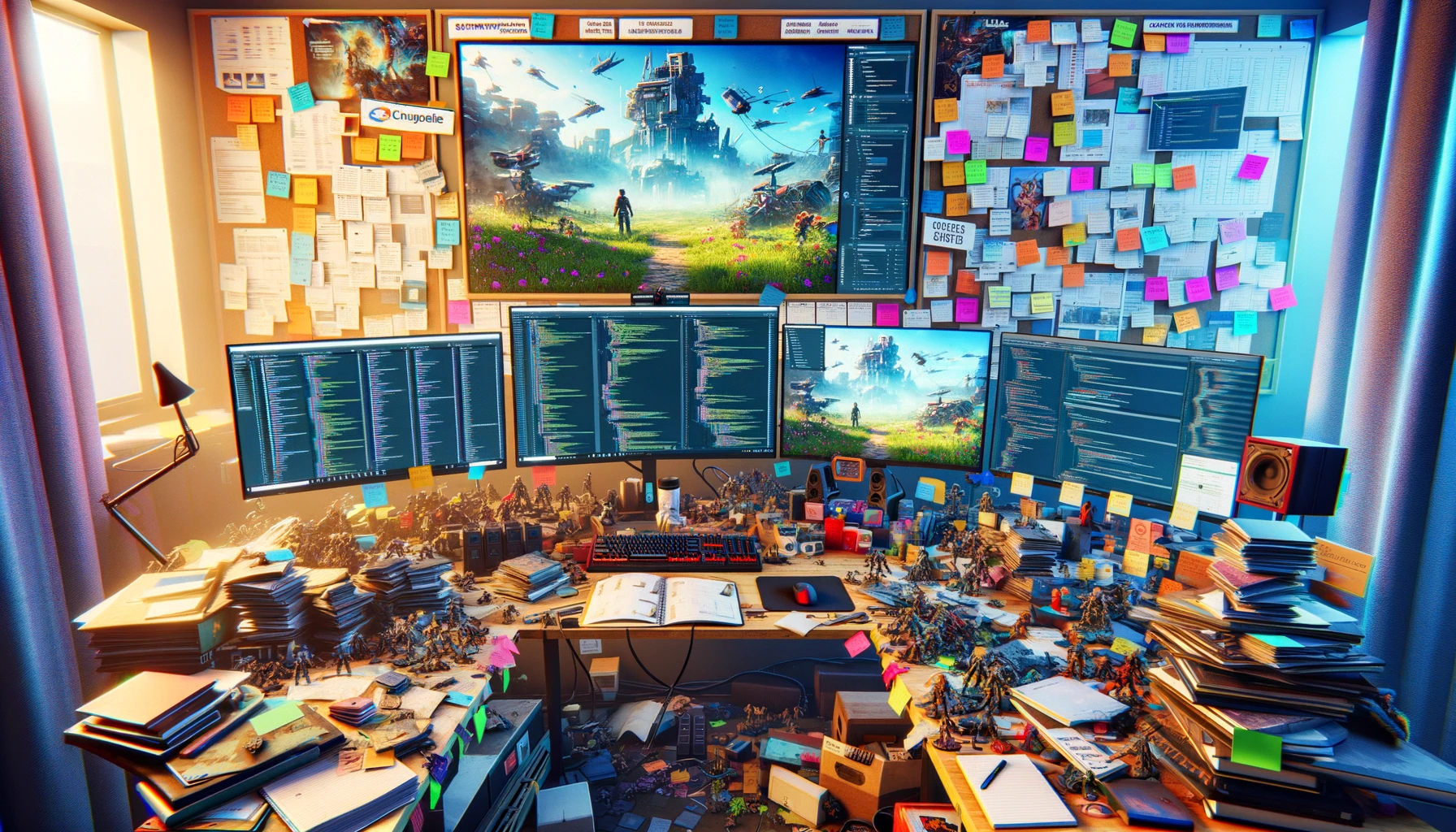In “Chronosynclastic Infundibulum”, players will engage in a variety of activities that leverage the game’s unique mechanics of time manipulation, detective work, and exploration within the rich setting of Chronopolis. Here’s a breakdown of the core gameplay mechanics and what players can expect to spend most of their time doing:
1. Time Manipulation
- Temporal Investigation: Players can rewind, pause, or fast-forward time in specific areas to observe changes, gather clues, and solve crimes. For example, rewinding time at a crime scene to see the crime unfold or fast-forwarding to see the potential consequences of certain actions.
- Anomaly Correction: Players will encounter temporal anomalies that need correcting, such as stabilizing fluctuating time zones to prevent catastrophic events.
2. Detective Work
- Clue Collection: Players will collect clues both in and out of temporal manipulations. This includes interviewing witnesses, finding physical evidence, and using tech gadgets to uncover hidden information.
- Case Solving: Linking clues together to form hypotheses about what happened, testing these theories via time manipulation, and ultimately solving cases and arresting suspects.
3. Exploration
- City Exploration: Players can explore the diverse districts of Chronopolis, each with unique cultural, architectural, and temporal characteristics. This exploration is not just geographical but also temporal, as players can witness how areas change over different time periods.
- Interaction with NPCs: Engaging with various characters, from city officials and tech moguls to street-level informants and rogue time manipulators. Each interaction can open up new quests, provide insights, or alter the player’s path.
4. Puzzle Solving
- Temporal Puzzles: Many puzzles will involve manipulating time to achieve certain outcomes, such as aligning historical events in the correct sequence to unlock a time-locked vault or using fast-forward to accelerate a chemical reaction needed to access a blocked area.
- Environmental Challenges: Overcoming obstacles that are affected by time manipulation, like navigating through a building as it decays or is constructed in reverse.
5. Strategy and Choice Making
- Decision Impact: Players’ choices in dialogues, time interventions, and moral decisions will affect how the story progresses and ends, influencing their relationships with NPCs and the city’s future.
- Resource Management: Managing resources like time energy, which is needed to manipulate time, adds a strategic layer to when and how players can use their abilities.
6. Combat and Stealth
- Temporal Combat: In some scenarios, players might need to use time manipulation tactically in combat situations, like rewinding an enemy’s attack or pausing to strategize.
- Stealth Operations: Using time manipulation to sneak past guards or avoid detection during investigative missions.
These gameplay elements are designed to keep players engaged and immersed in a constantly evolving narrative and world, where their actions have significant and visible impacts.
